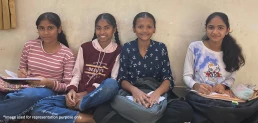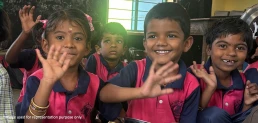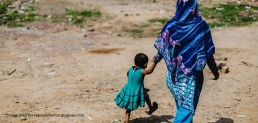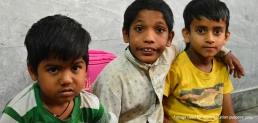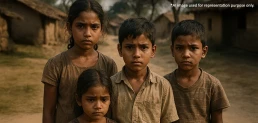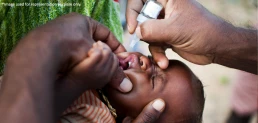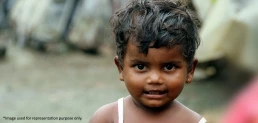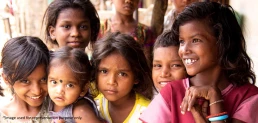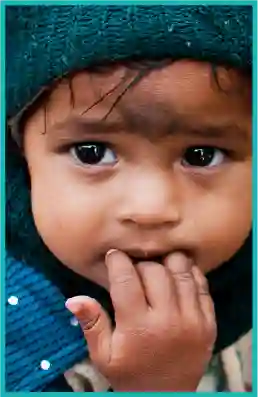Home, food, and education are the basics of every child’s needs. But there’s something else just as important regardless of their background- space to simply be a child. For children in underserved communities, where survival takes center stage each day, even the thought of aspiration can feel like a luxury. CRY’s Life Skills activities help children shape their thoughts, discover their voice, and aspire to dream bigger.
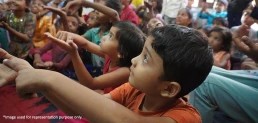

To change this, we need to look at the common diseases affecting children, understand simple yet effective steps to improve nutrition and hygiene, recognize the role parents and communities can play, and see how CRY is working to give every child a healthier tomorrow.
Key components of a life skills curriculum
A well-crafted life skills curriculum equips children with essential tools to navigate challenges, build confidence, and thrive. Below are its key components, along with life skills examples that show how children learn and grow:
Self-awareness
Marginalized children often have limited space to reflect on themselves or their community, as daily survival dominates their lives. Life skills sessions help children understand their uniqueness and sense of belonging, fostering self-awareness and pride.
Emotional regulation
Children facing social neglect or interrupted education rarely receive recognition for their abilities, affecting their confidence. Life skills sessions nurture self-worth, helping children appreciate their strengths and feel empowered.
Social skills
Opportunities to lead are limited for marginalized children due to social and structural constraints. Life skills nurture leadership by giving children roles in group activities, promoting initiative, teamwork, and the ability to guide and inspire others.
Communication skills
In many rural areas, children’s communication skills often remain underdeveloped due to limited opportunities to speak, share ideas, or interact beyond their immediate environment.
Communication skills activities help children express themselves better while learning the power of words and body language. Through interactive games, storytelling, short speeches, and listening exercises, life skills sessions build clarity, confidence, and meaningful connections.
Problem-solving and critical thinking
In rural communities, children often have limited exposure to problem-solving and critical thinking due to resource constraints, rote-based education, and socioeconomic pressures that restrict learning opportunities.
Problem-solving and critical thinking exercises encourage children to view challenges as opportunities to grow. Through creative brainstorming and collaborative activities, life skills activities help identify causes, analyze effects, and work toward solutions. These sessions build resilience, creativity, and logical reasoning, enabling children to approach everyday problems with confidence and a positive outlook.
Empathy building
Underserved children often struggle to express or understand emotions due to difficult environments. Life skills sessions use role-plays, storytelling, and reflection to help them recognize feelings, see others’ perspectives, and respond with kindness. This nurtures self-awareness and social sensitivity, enabling children to build healthy relationships and face challenges with compassion.
Financial literacy and basic math skills
Marginalized children often grow up without opportunities to understand money or develop numeracy, leaving them unprepared for real-life financial decisions.
Financial literacy and basic math skills activities help children learn earning, saving, spending, and budgeting. Through interactive games, simulations, and practical exercises, life skills build numeracy, decision-making, and responsible money management, empowering children to make informed choices and handle everyday financial situations with confidence.
How Life Skills help children overcome challenges in rural areas
For first-generation learners or children pulled out of school for child labor, household responsibilities, or early marriage, returning isn’t easy. Many struggle to understand themselves, their potential, or the value of education. This is how life skills help them.
- Helps children process trauma through creative expression
Children rescued from early marriages, child labor, or abuse often carry unspoken scars. Life skills activities give them a safe space to express feelings, allowing healing when words fall short. - Acts as an icebreaker to ask for help
Children from underserved backgrounds may fear judgment and struggle to open up. Art, games, and group activities help build trust with peers and mentors, creating safe moments to speak up and seek support. - Fosters peer bonding in a non-judgmental space
Through Children’s Collectives, CRY America’s project staff encourage games and group activities during these sessions, helping children form friendships, trust, and social skills, free from academic pressure or past labels. - Supports school retention and reintegration
Life skills sessions make school appealing and provide a safe space, encouraging rescued or first-generation learners to return and stay engaged. - Sparks future aspirations beyond survival
Access to activities helps children dream beyond mere survival, inspiring ambitions as athletes, performers, or teachers.
How CRY America’s projects are making a lasting difference through life skills education
CRY’s Life Skills lessons go beyond the four walls of the learning center. By learning these skills, children develop a sense of responsibility, identity, and enthusiasm for activities that belong to them. Here’s how CRY America’s project team engages with children on the ground.
- Engaging children through sports
CRY breaks the ice with children through sports activities like karate, kabaddi, and football. Staff don’t just play with children, they play among them, helping them feel seen, heard, and included. Sports also give children a sense of belonging, and CRY supports those who wish to continue their education while pursuing opportunities to compete at district and state levels. - Creating study materials
Learning is more effective when children are actively involved. At CRY’s Child Activity Centers, children are encouraged to create their own Teaching Learning Materials (TLMs) with guidance from project teams, making learning engaging and interactive. - Involving children in campaign activities
Children participate in campaigns such as painting walls to promote girl child education, making placards against child labor, or writing slogans to raise awareness about child marriage or trafficking. This involvement helps them understand the issues they advocate for while being supported every step of the way. - Organizing special events
Children also help organize celebrations for special days like Independence Day and Children’s Day. They take active roles in Village Health and Nutrition Days (VHND) alongside project staff and Anganwadi workers, gaining hands-on experience in community engagement.
Conclusion
Education is essential, but life skills activities make learning engaging, build confidence, and help children stay in school. While we have come a long way, millions of children are still waiting for the chance to dream bigger. Support CRY America to give every child the freedom to play, create, and simply enjoy a happier childhood.
Recommended for you











